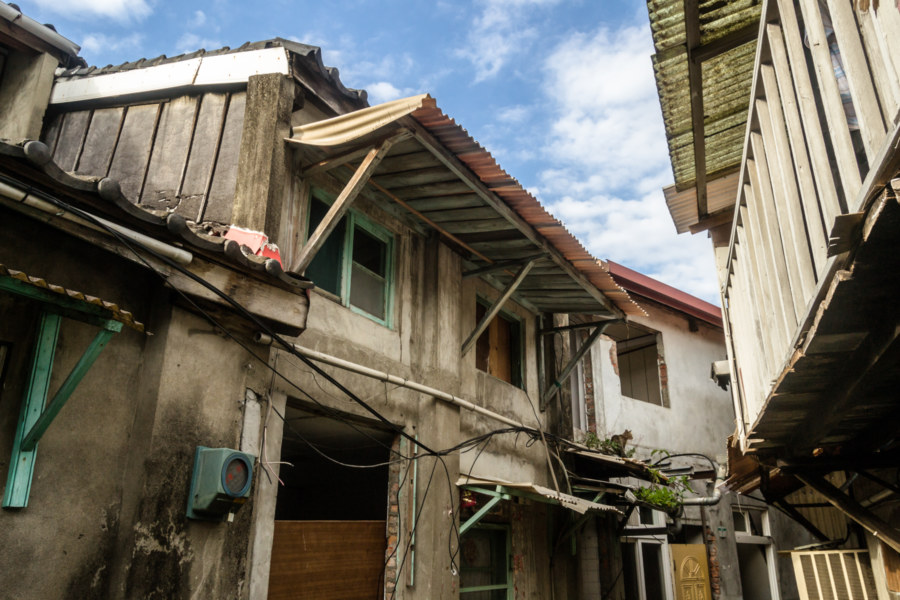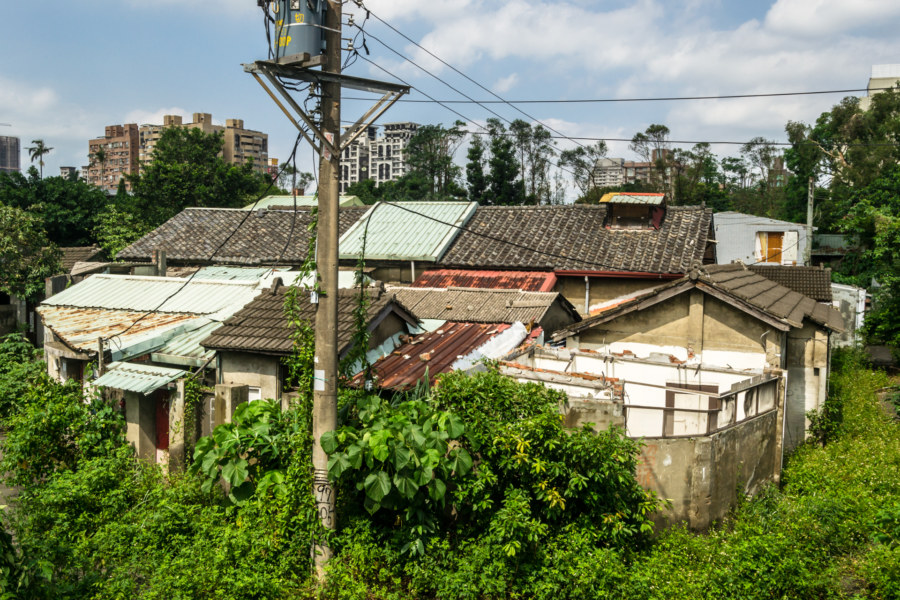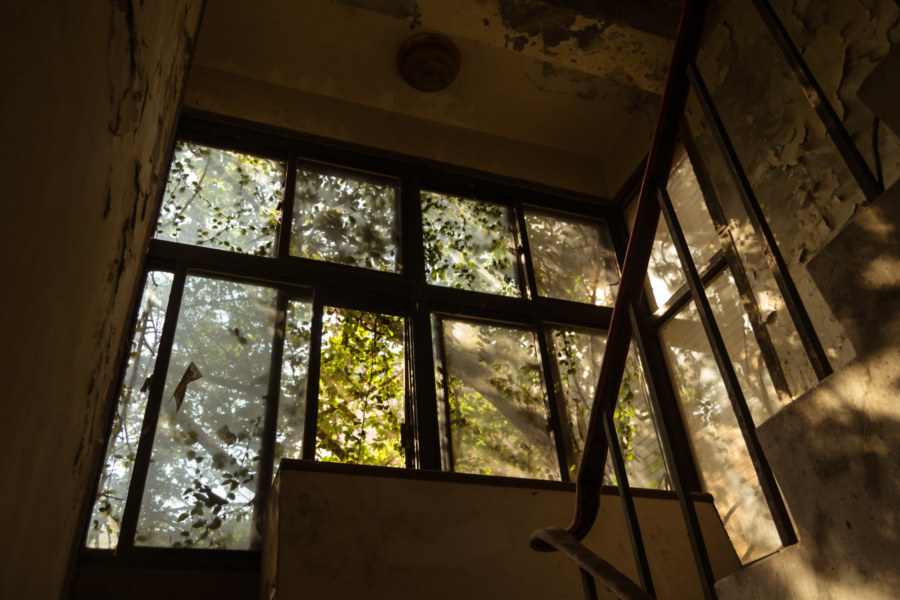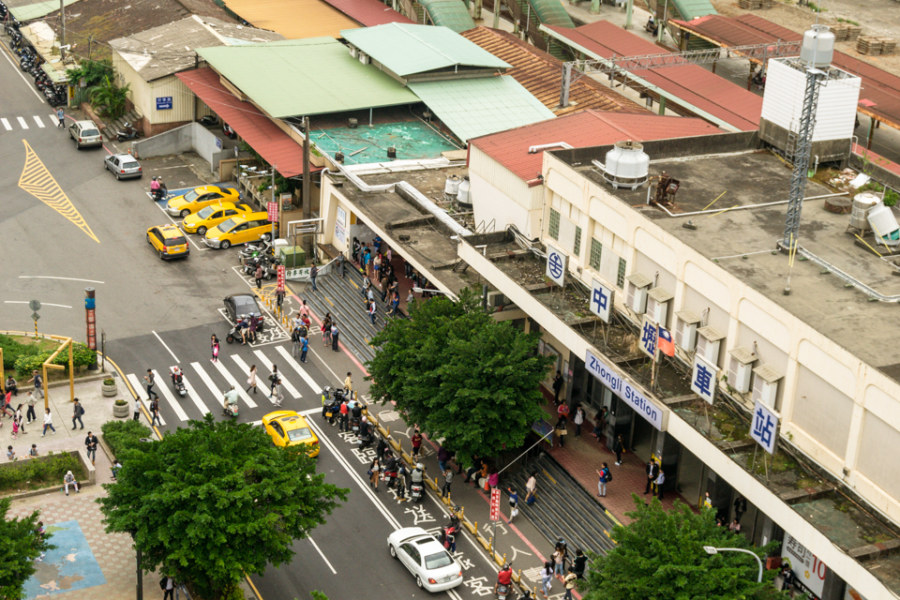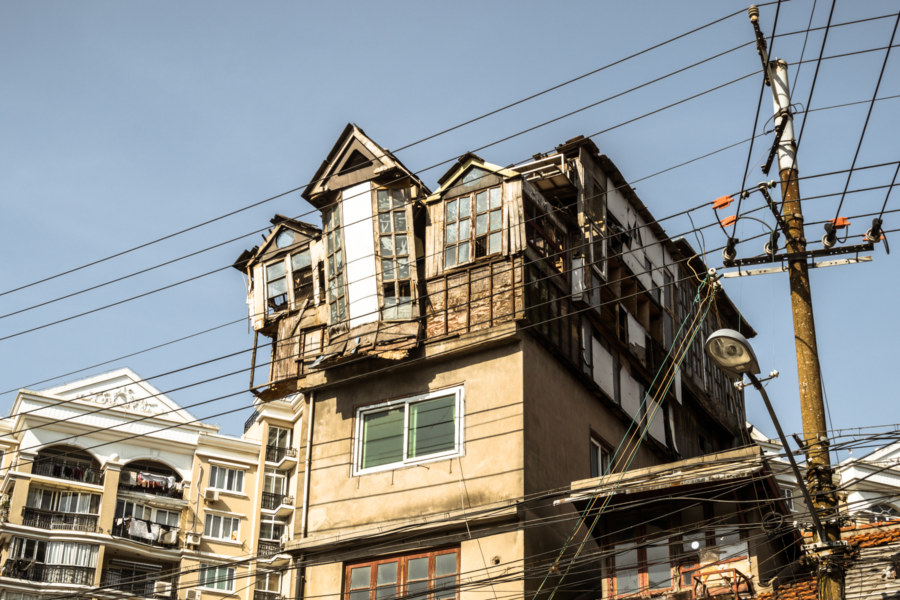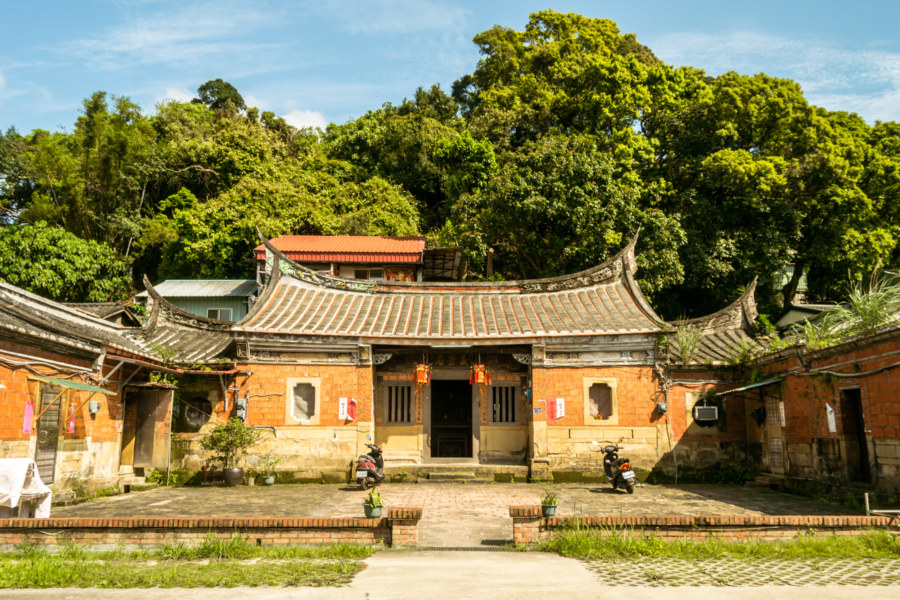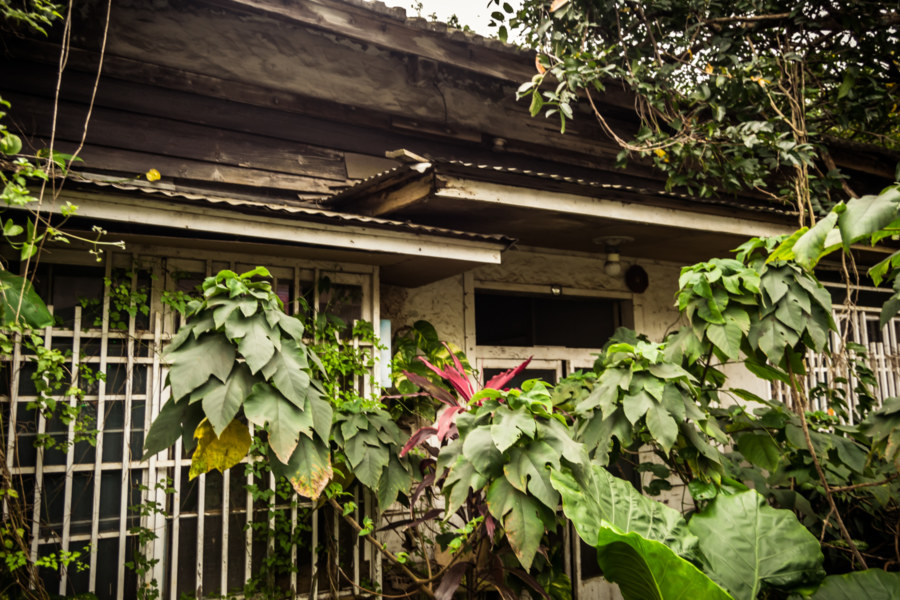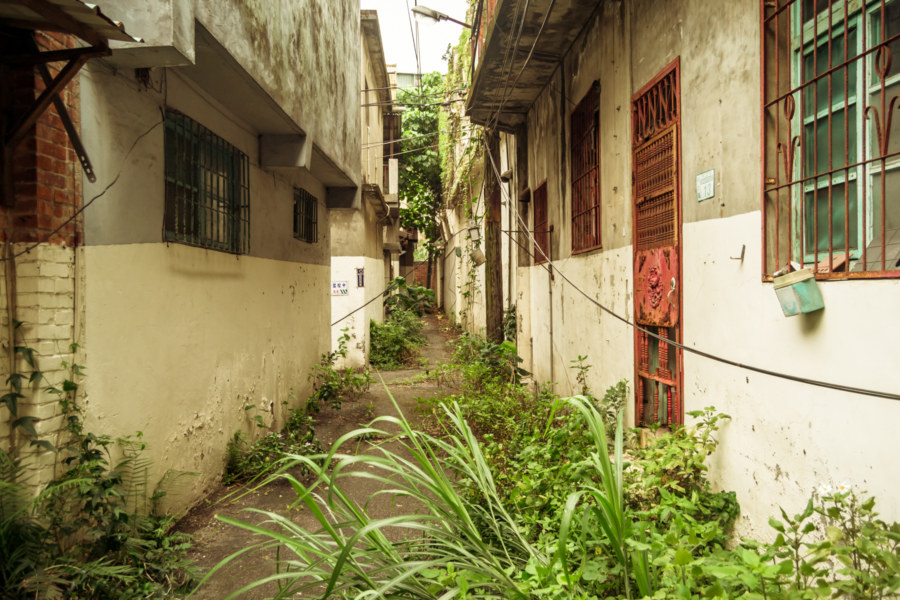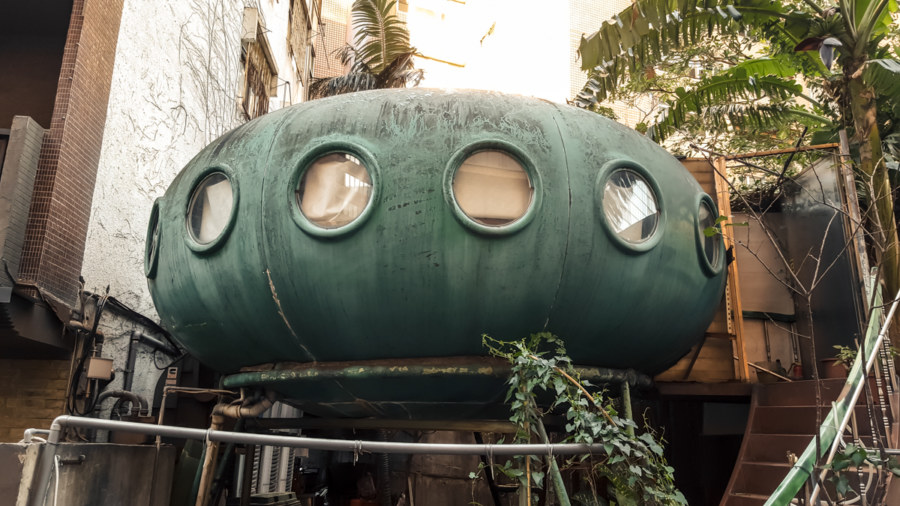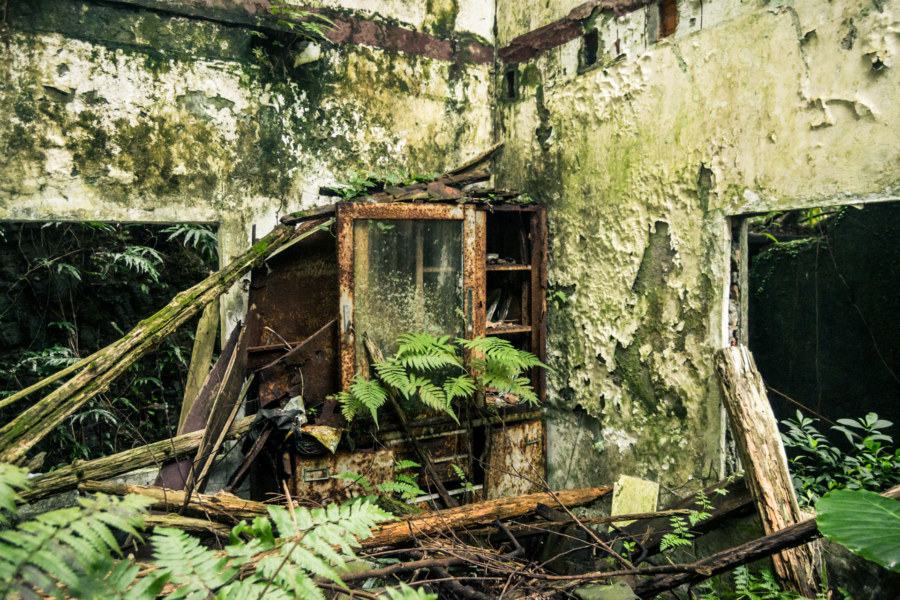Fùshuǐ Village (富水里) is located on a small parcel of land at the southern edge of Zhongzheng, Taipei, just to the west of Gōnggǔan Station (公館站). Technically the village contains the now-abandoned Jiahe New Village (嘉禾新村), a military dependents’ village previously profiled on this blog, but most common uses of the name refer to the illegal settlement running along Yǒngchūn Street (永春街), just inside the riverside wall. This settlement of around a hundred homes, like nearby Treasure Hill (寶藏巖), was supposed to be destroyed around the turn of the millennium, but plans have gone awry, and its fate remains unclear.
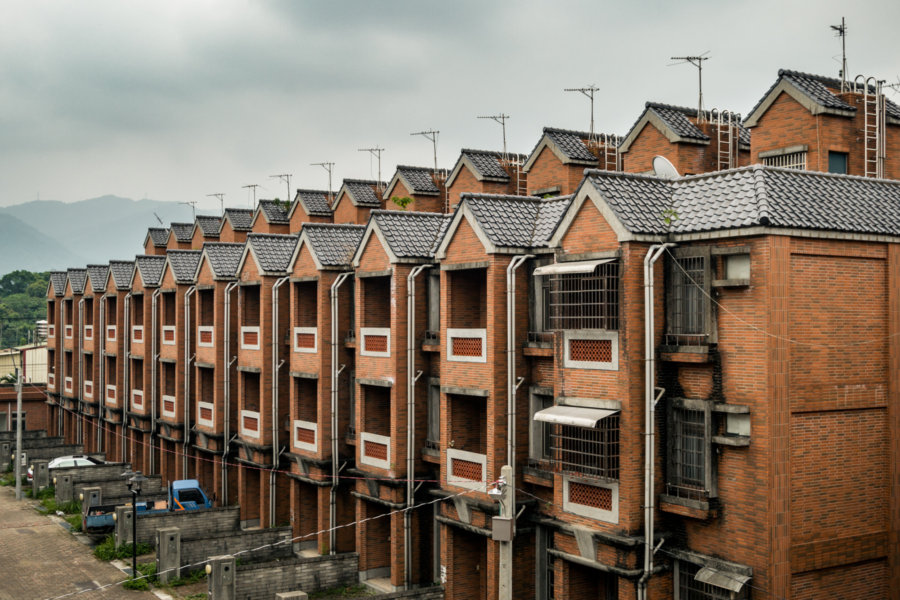
Where people are meant to reside. See also: commercial and industrial.
Adjacent Terms
Jiahe New Village 嘉禾新村
Jiahe New Village (嘉禾新村) is one of more than 800 military dependents’ villages (Chinese: juàncūn 眷村) built in Taiwan in the late 1940s and 1950s to provide provisional housing for KMT soldiers and their families fleeing from the Chinese Civil War. Approximately two million people crossed the Taiwan Strait from China from 1945 to 1949, bolstering an existing population of approximately seven million. More than 600,000 of these Chinese immigrants ended up in military villages like this one in Zhongzheng, Taipei, which was forcibly abandoned only a couple of years ago as part of a wave of urban renewal projects sweeping the nation.
Keelung Road Guest House 基隆路招待所
Not far from Taipei 101 and the heart of Taipei’s central business district one will find an ulcerous anomaly on the supine body of the sprawling city. It would be impossible to miss this ruin, for a wild riot of plant life traces its angular outlines, and an unusual assortment of graffiti gilds the arcade along Keelung Road. I regularly ride by here on my way to various working cafes further afield and naturally couldn’t resist taking a look inside one day. I have not puzzled out the formal name of this abandonment but strongly suspect it was an official guest house related to the armed forces, particularly as it was located adjacent to the former #44 West Village (四四西村), a military dependents’ settlement.
Postcards From Zhongli 中壢明信片
I resided in Zhongli, Taoyuan, for two months at the very end of 2015 for reasons outlined in my first dispatch. In short: I wanted to try out living in another city in Taiwan and had a few good friends in the area, one of whom is fellow Canadian blogger Josh Ellis. In my time in Zhongli I captured numerous scenes from everyday life in this burgeoning conurbation of half a million. This post is meant to convey a sense of what it was like to live there for a while—just as I previously did for my time in Wenshan District, Taipei. It is not meant to be a comprehensive guide or a review; think of this as a loose collection of snapshots and impressions of a mid-sized Taiwanese city not commonly documented in English.
Where Shanghai Disappears
Yesterday I was on my way to check out 1933 Shanghai 上海1933老场坊, a restored Art Deco slaughterhouse in Hongkou, when I stumbled upon a compact neighbourhood in the process of being torn down, part of an ongoing process of urban renewal in Shanghai. Every year more of these old areas are torn down, their residents forcibly evicted, new high-rises and shopping malls going up in their place. My time in Shanghai is too short to allow for any measure of expertise to grow—so all I have to share here are a few photos and some comments from a quick walk around (and through) the block.
Yifang Old House 義芳居古厝
Yìfāng Old House (義芳居古厝) is a traditional courtyard home, or sānhéyuàn (三合院), in the scenic foothills of southeastern Da’an, Taipei. It was built in 1876 during the Qing dynasty era by a wealthy branch of the Chen family. At that time it was far from the commercial centers of Wanhua and Dadaocheng, both near the other side of Taipei Basin, on an almost lawless frontier. Nowadays this old house is a stone’s throw away from some of the busiest streets in the city as it is located immediately behind the National Taiwan University (國立臺灣大學) campus, better known as Táidà (台大).
Songshan Railway Dormitories 松山台鐵宿舍
Songshan has long been a major hub for the railway industry in Taiwan. It is home to the Taipei Railway Workshop, a sprawling maintenance depot and rail yard presently undergoing renovations into a full-scale museum. The Western Trunk Line (縱貫線) also runs through the district, although it is completely underground now, following the path of Civic Boulevard (市民大道) for much of its length. I went poking around the area sometime in 2016 and stumbled upon a block of dilapidated homes wedged into a small parcel of land at the tail end of the railway workshop. It turns out these are former railway worker dormitories (宿舍) dating back to the Japanese colonial era.
Jiangling New Village 江陵新村
Jiānglíng New Village (江陵新村) was one of more than 800 military dependents’ village in Taiwan before its ultimate destruction in mid-2015. It was formerly located not far from the confluence of Jingmei River (景美溪) and Xindian River (新店溪) just outside Taipei city limits in the northern part of Xindian. Immediately to the south is an active military base of some kind—and the historic Jingmei Prison can be found on the opposite side of the nearest major intersection.
Da’an UFO House 大安飛碟屋
Taiwan has an unusual fixation on UFO houses. Browse around the web and you’ll invariably encounter references to the famous UFO resort in Sanzhi, demolished long ago in 2009. Keep digging and you might read about a second UFO resort in Wanli, still extant and the subject of a future post. But there’s more—and you don’t even have to leave Taipei city limits to find another example of this peculiar architectural fetish.
Ruchuan Village 入船里
Rùchuán Village 入船里 is a small community in Keelung, a historic port town of approximately 373,000 scattered among the rugged hills of northeastern Taiwan. Keelung’s growth over the last century has been constrained by a lack of flat land on which to build—with much of that concentrated at the foot of the harbour that now constitutes the downtown core. With few other options for expansion the city has sprawled upward along the hillsides and deep into the many valleys leading up from the port.
